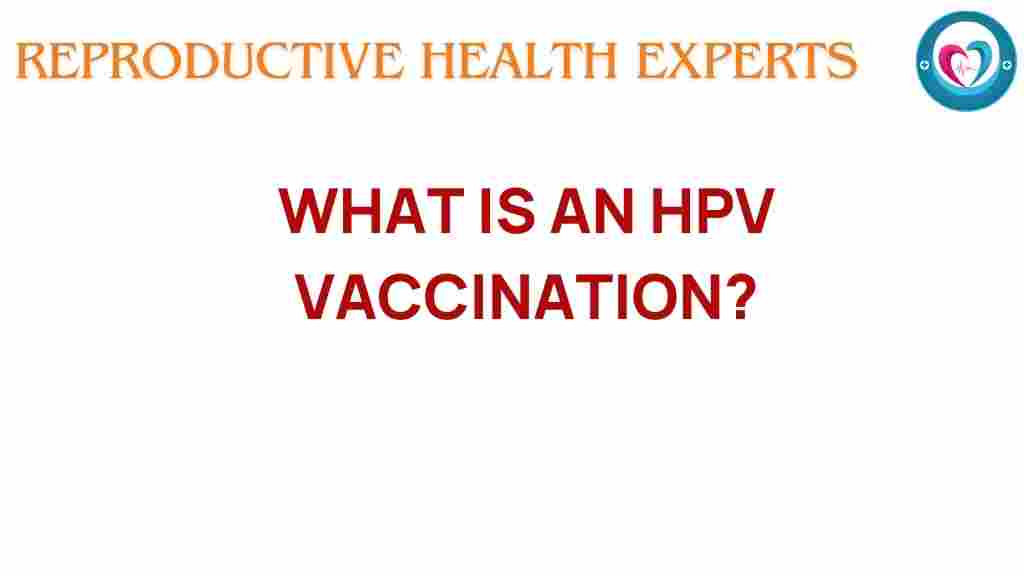Unveiling the Mystery of HPV Vaccination: What You Need to Know
The human papillomavirus (HPV) is one of the most common sexually transmitted infections worldwide. Understanding the significance of HPV vaccination is crucial for both individual and public health. This article aims to provide comprehensive information about HPV vaccination, its role in disease prevention, particularly cervical cancer, and how it impacts women’s health. We will delve into the benefits, the vaccination process, and ways to enhance awareness surrounding this vital immunization.
Understanding HPV and Its Risks
HPV encompasses over 200 related viruses, some of which can lead to serious health issues, including:
- Cervical cancer
- Other genital cancers (vulvar, vaginal, penile)
- Throat and mouth cancers
- Genital warts
According to the World Health Organization (WHO), cervical cancer is the fourth most common cancer in women globally, and HPV is the primary cause. This highlights the importance of HPV vaccination in disease prevention.
The Importance of HPV Vaccination
HPV vaccination plays a crucial role in reducing the incidence of HPV-related diseases. Here are some key points regarding its importance:
- Prevention of Cervical Cancer: The vaccine significantly lowers the risk of developing cervical cancer by preventing the initial infection with high-risk HPV types.
- Reduction of Genital Warts: Vaccination can also protect against the strains of HPV that cause genital warts.
- Community Immunity: Widespread vaccination contributes to herd immunity, reducing the overall prevalence of HPV in the population.
- Cost-Effectiveness: Preventing diseases through vaccination is often more cost-effective than treating them.
Who Should Get Vaccinated?
The HPV vaccine is recommended for preteens aged 11 to 12 years, but it can be given starting at 9 years old. Here’s a breakdown of the recommended vaccination schedule:
- **Preteens (ages 11-12)**: Ideally receive two doses of the HPV vaccine.
- **Teens and young adults (ages 13-26)**: If not previously vaccinated, they should receive three doses.
- **Adults (ages 27-45)**: HPV vaccination is less effective for older populations, but individuals in this age range may still benefit from vaccination after consulting with their healthcare provider.
The HPV Vaccination Process
Getting vaccinated against HPV is a straightforward process. Here’s a step-by-step guide:
Step 1: Consultation with a Healthcare Provider
Before vaccination, it’s essential to have a discussion with a healthcare provider. They will assess health history and provide personalized advice regarding the HPV vaccination.
Step 2: Scheduling the Vaccination
Once the consultation is complete, you can schedule the vaccination. Depending on age and previous vaccination status, the schedule will vary:
- Two-Dose Schedule: Administered six to twelve months apart.
- Three-Dose Schedule: Doses given at 0, 1-2 months, and 6 months.
Step 3: Receiving the Vaccine
The HPV vaccine is administered via an injection, typically in the upper arm. It’s a quick and minimally painful process.
Step 4: Monitoring for Side Effects
After receiving the vaccine, individuals are usually monitored for a brief period to check for any immediate adverse reactions. Common side effects can include:
- Pain at the injection site
- Fever
- Nausea
- Dizziness
Step 5: Follow-Up Doses
For those receiving the three-dose schedule, it’s crucial to complete the series for optimal protection. Set reminders for follow-up appointments.
Step 6: Stay Informed and Aware
Post-vaccination, continue to educate yourself about HPV and cervical cancer. Regular screenings and awareness are vital components of women’s health.
Troubleshooting Tips for HPV Vaccination
While the HPV vaccination process is generally smooth, some individuals may have concerns or face challenges. Here are some troubleshooting tips:
Concern: Fear of Needles
If you are anxious about needles, consider the following:
- Discuss your fears with your healthcare provider beforehand.
- Practice deep breathing techniques to calm your nerves.
- Bring a friend or family member for support during the appointment.
Concern: Misunderstanding Side Effects
Many people worry about potential side effects. It’s essential to distinguish between mild side effects and serious reactions:
- Mild Side Effects: Common and usually resolve quickly.
- Serious Reactions: These are rare, but if you experience severe allergic reactions (e.g., difficulty breathing), seek immediate medical attention.
Concern: Scheduling Conflicts
If you have trouble scheduling your vaccination:
- Contact your healthcare provider for flexible options.
- Look for community health clinics or vaccination drives that may offer the vaccine.
Concern: Lack of Awareness
Raising awareness in your community can help others understand the importance of HPV vaccination. Consider:
- Organizing informational sessions at schools or community centers.
- Sharing resources online through social media platforms.
- Encouraging discussions among friends and family.
Conclusion
HPV vaccination is a vital tool in the fight against cervical cancer and other HPV-related diseases. By understanding the importance of this vaccine, following the recommended vaccination schedule, and promoting awareness, we can significantly improve women’s health and public health overall. Vaccination not only protects individuals but also contributes to community immunity, helping to reduce the prevalence of HPV. Let’s take proactive steps towards a healthier future by prioritizing HPV vaccination and encouraging others to do the same.
For more information on HPV vaccination and resources, visit the CDC HPV Vaccine Page. You can also learn more about cervical cancer screening and prevention strategies through this external resource.
This article is in the category Prevention and created by ReproductiveHealthExperts Team
